|
The first version of this report omitted an important picture showing evidence of chemical weapons being used by the Burma Army against the Kachin people.
Dear friends,
Thank you so for all your love and support. We are now on a relief mission in Kachin State, Northern Burma and here there is no ceasefire. During the training of the new teams, we could hear shells explode as the Burma Army shelled villages nearby with 105 Howitzers, 120mm and 81mm mortars. Over 50,000 people remain displaced and during this mission we saw over 12,000 of them in eight different sites. The FBR staff trained 12 new teams here: 9 Kachin teams, 1 Arakan, 1 ABSDF (All Burma Student Democratic Front), and 1 Ta-aung (Palaung) team, and went with them on an extended relief mission. We gave medical care, put on Good Life Club programs and got as close as we could to the Burma Army to document their activities. Attacks have slowed down this month to three in our area and one we witnessed, but there are still over 110 Burma Army battalions operating in Kachin State.
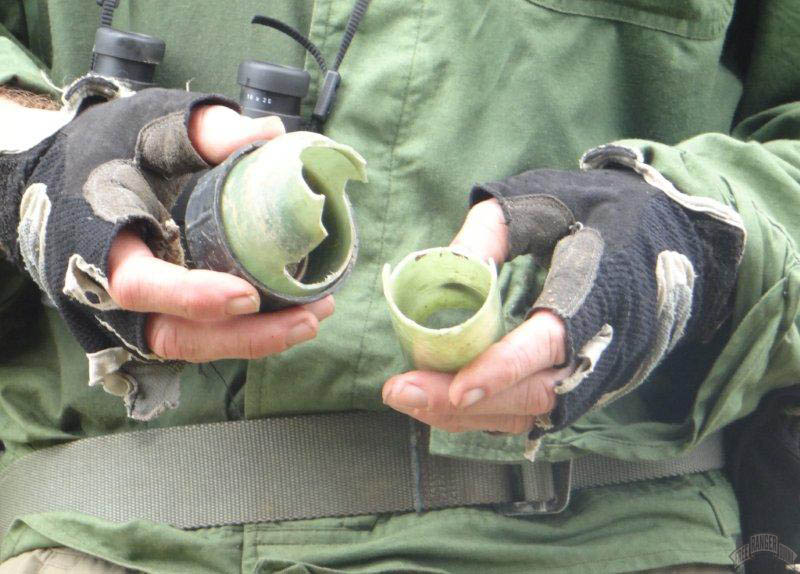 |
| Photo of chemical munitions container used against the Kachin |
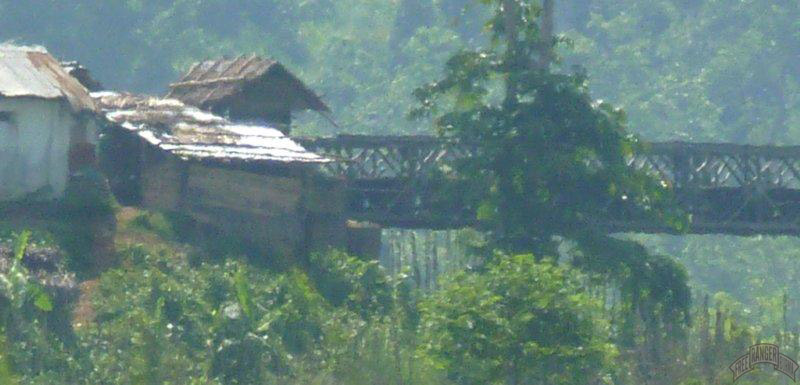 |
| Burma Army camp on Myitkyina-Bhamo bridge |
The first IDP site we visited was a factory on the outskirts of a town that has been designated by the Kachin Refugee Committee, of the Kachin Independence Organization (KIO), to serve as a temporary home for over 2,000 displaced people, out of over 50,000 in other, similar areas. The first people arrived in early June last year after the fighting started and have been here now for one year. The KIO is doing their best to give food, education and shelter to the IDPs but it is still a difficult way to live. In this first site we visited, each family has a 3 meter by 3 meter plywood cubicle, with over 70 of these stuck together under a tin roof in the main part of the factory. It is hot here now, and in the cubicles, stifling.
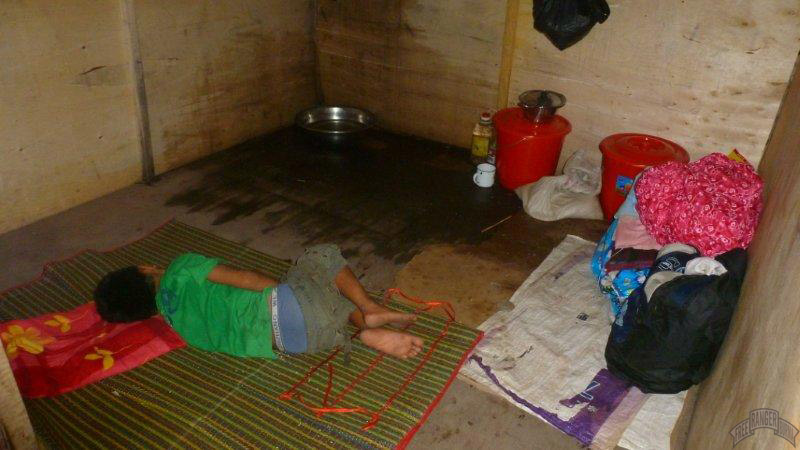 |
| Child in IDP site |
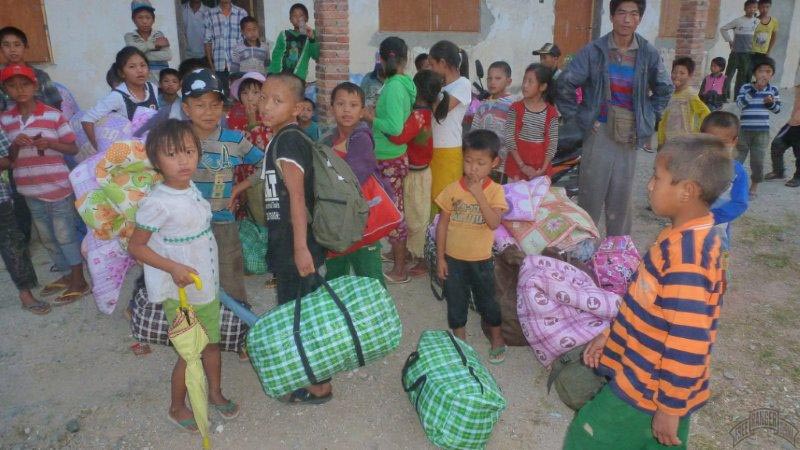 |
| Children newly arriving to IDP site |
During this first program, and seeing the situation of these people, anger rose in me at why people were forced to flee and live like this. I thought, “This is why we are in FBR, this is what our mission is about- stand with these people and help them until there is change.”
What can we do? For us it seems we can do very little – but those little things we can do, we do with all our might. We pray with and for the IDPs; we run a Good life Club program of songs, health and spiritual teaching for children and skits and games for the families; we hand out sports equipment for schools to teachers and t-shirts for the kids, and set up a mobile clinic to treat basic ailments and pull teeth as needed; we interview the people here and send their stories out around the world; we go near to and recon Burma Army camps to monitor their activity and put a light on their actions. During this mission, we visited IDPs near towns as well as in the jungle and spent most of our mission on foot to reach different communities, document destroyed villages and report on the Burma Army activities.
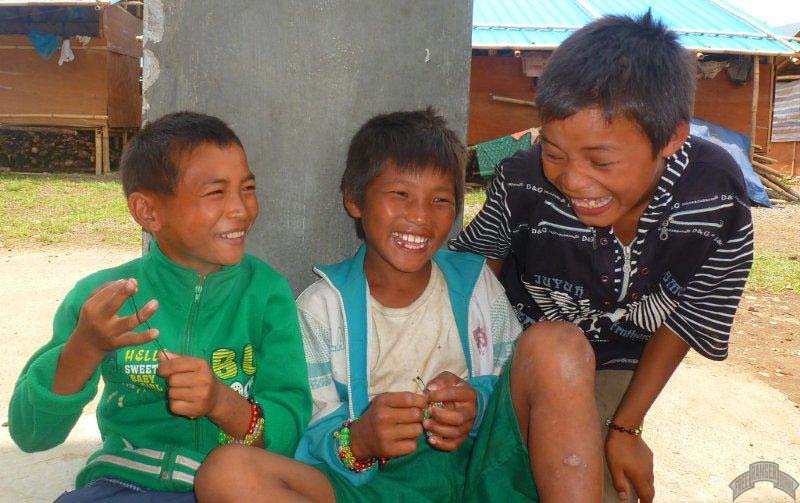 |
| Kachin kids during Good LIfe Club program at IDP site |
One man who had lost one of his children asked me, “Who cares, and who do I complain to, who do I make a legal complaint to? I have lost my home, my village, animals and one of my sons is still missing since the attacks. What do I do?” I prayed with him and told him to write out his complaint. I told him to give it to us and we would put it out as news and pass it to some new contacts we have in the Burma government and anyone else we can. I told him maybe the government will do nothing but that, above all, God cares and will help him. He said, “Thank you, that makes me feel like I can at least do something, it gives me peace. Thank you, I will try. I feel better now.” He had new hope and conviction based on actions he would take and based on his faith that God does care and will help.
We did multiple recons of Burma Army camps, usually only able to get no closer than one kilometer away but sometimes we were able to move within 200 yards of their camps. We took photos of the Burma Army as they occupied the ground that belonged to the Kachin people and as they sat in dominant positions overlooking villages, towns, bridges and the Taping River dam they had taken. Even as we observed them, I felt sorry for them: they looked hungry, unkempt and not motivated. Their mission is not a noble one and I believe they know it. So we crawl as close as we can, document as much as we can, and even though sometimes we do not want to, we pray for them. All of us are in need of redemption and while we stand with the oppressed, we know the line between good and evil runs between each heart, not between people. We also pray for ourselves to not be wounded, captured or killed as we do this.
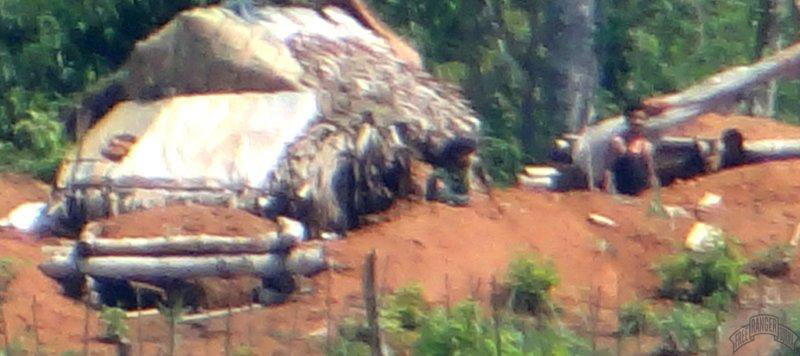 |
| 5 Burma soldiers in trenches and bunker with machine gun |
On the way to a recon of a highway bridge held by the Burma Army, we passed five burned homes that the Burma Army had torched two weeks ago on May 28th. They had come through in a 200-man resupply column for one of their forward camps and as they approached the homes they opened fire with rifles and machine guns. Then as the Kachin soldiers tried to hold them off, the Burma Army fired two rifle grenades with chemical munitions. White smoke came out as the grenades impacted and immediately all those caught in the cloud of smoke began to choke, become dizzy and nauseous and their eyes began to burn. Although no affected person has died from these munitions, this may be a chemical more potent than tear gas or military grade High Content CS, as the symptoms persisted for up to three days.
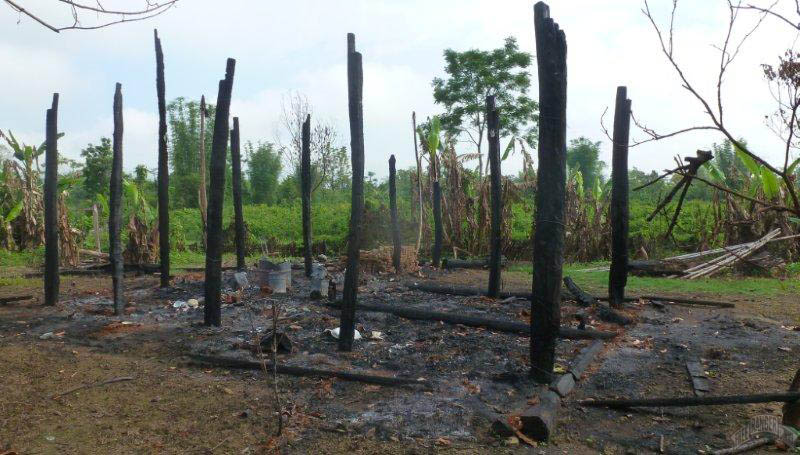 |
| Homes burned 28 May 2012 near Nam Sang Yang village |
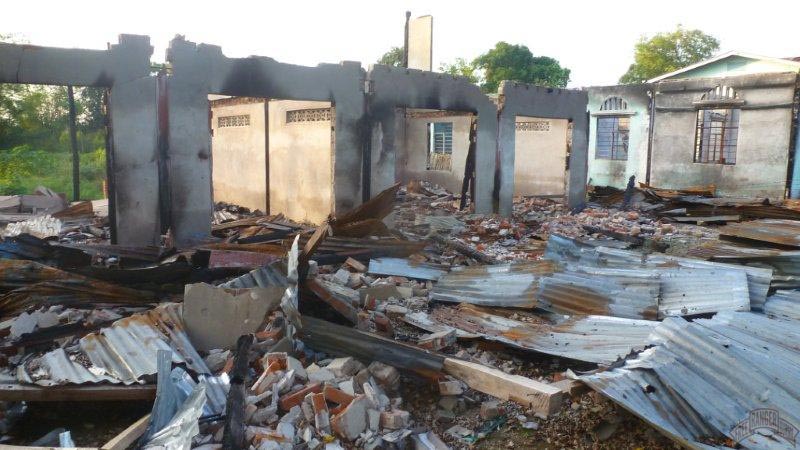 |
| Homes destroyed by Burma Army in Nam Sang Yang town |
As I looked at a broken piece of the empty canister of gas munitions, the Kachin soldier who showed it to me said, “They were 200, we only 12, but we slowed them down and kept them from doing more damage to the village and we are still here.” He is less than 5 feet tall and is the same soldier who led us creeping through open rice fields in between four Burma Army camps, right up to a Burma Army position on the Bhamo- Myitkyina bridge. He is all smiles, all courage, and all commitment.
 |
| Burma Army camp on Myitkyina-Bhamo bridge |
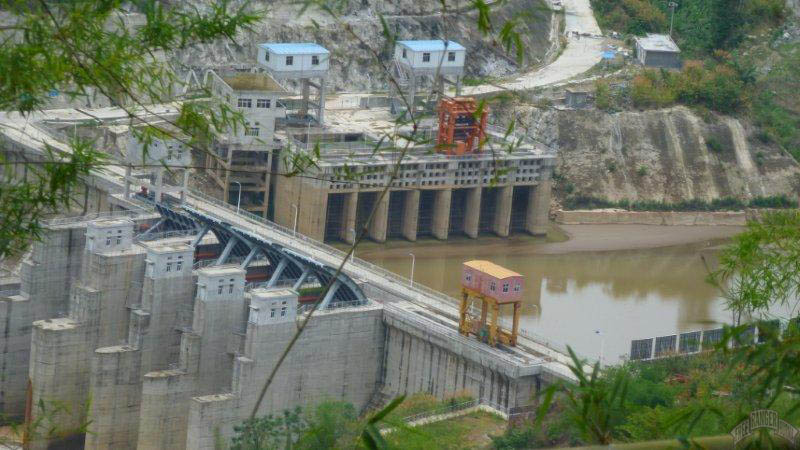 |
| Taping Dam with Burma Army bunkers in foreground |
One night as we slept in the pillaged compound of a family who had fled, I found wedding photos of the parents and a series of photos of their young son at different stages of schooling. The pictures that struck me most were one of the boy on a podium receiving his 8th grade diploma. The parents had this picture up in almost every room – they seemed so proud of their son. The home, ransacked as it was, still had charm and you could see it was a place of love, warmth and most of all a home for someone. The other picture was of the mother in her wedding dress, beautiful and serious. This I found outside the house in the weeds and trash. I was told that the father became sick and died after the attacks started, that the mother and boy fled and now the boy might be in lower Burma in boarding school and the mother in China with relatives. I am not sure how, but I hope to get in touch with these two people to thank them for their home and to tell them it is still a fine home and that I pray one day they can return. On our last day here we were in the middle of an exchange of fire between the Burma Army and the Kachin resistance. No one was hit by the Burma Army machinegun and rifle fire, but the Burma troops remain in their camp above the village and the village remains empty.
I write this from a small dilapidated bamboo hut on the edge of a town ransacked and burned by the Burma Army, and it is clear that the situation in Burma is not simple. In Burma there is more than one government. There is the central government and there are many representative ethnic governments. While positive changes have occurred, there are still attacks and oppression. We had a very good meeting in March with representatives of the central government and we felt mutual warmth and a shared sincerity for change, but on the ground in some areas we see other realities as well: children killed, homes destroyed, churches desecrated, people fleeing. As changes occur in Burma, how can people under oppression and attack be helped in a more comprehensive way? What do you do when oppression which is destructive to both oppressed and oppressor goes on? We thank you for your part in standing with and helping those who are in need and not yet free.
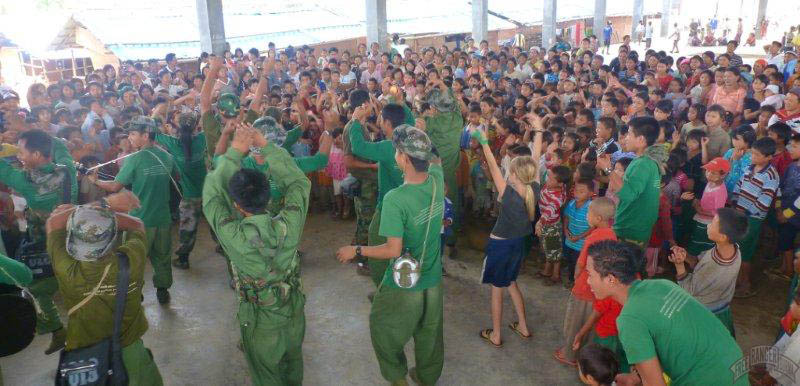 |
| Good Life Club program |
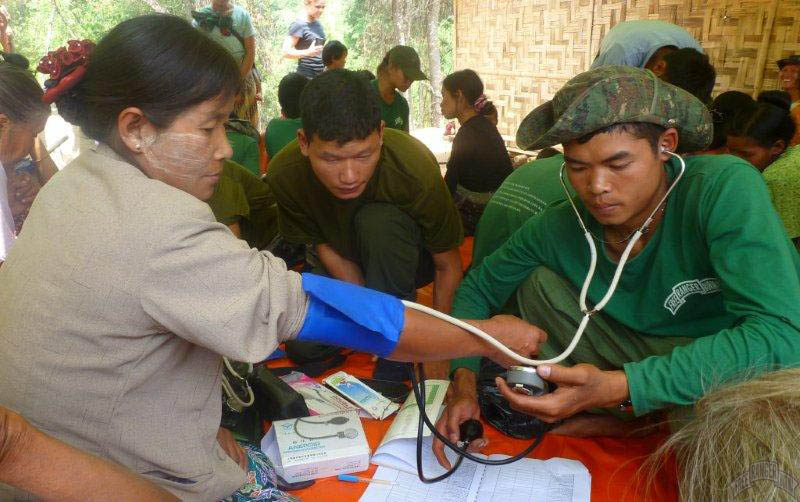 |
| Medics treat patients |
May God bless you,
Relief Team Leader, Family and the Free Burma Rangers
Kachin State, Burma
